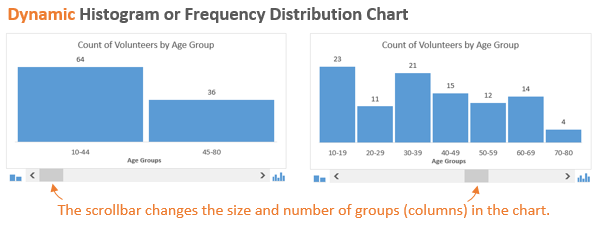

But consider the syntax for the INDEX function: We know that the FREQUENCY function returns an array. However, we can use a different approach with the FREQUENCY function. To illustrate, if you select row 21 and then try to insert (Ctrl++) or delete (Ctrl+-) a row, Excel launches an error dialog that says, “You can not change part of an array.” The problem with this approach is that you can’t modify the number of bins in your distribution easily. …and then press Ctrl+Shift+Enter, to enter the formula as a multi-cell array. The topic explains that because FREQUENCY returns an array, you would need to select the range D18:D25, type in… Here, data_array is the data in the range C2:C13, and the bins_array is the range C18:C25. The FREQUENCY help topic explains that the function has this syntax: When you click that link, Excel launches the help topic about the function. The bottom-left corner of this dialog has a link titled Help on this function.

…into a cell, and then press Ctrl+A to launch the Function Arguments dialog. Take a look at Excel’s help topic for the FREQUENCY function. Excel’s FREQUENCY Function, with the Standard Method Although Walt only needed to use one of these, it’s useful to have the other methods in the back of your mind. With these preparations out of the way, I thought of five ways to calculate the counts in column D. Second, using range names reduces the chance that I’ll reference an incorrect range in a formula. First, replacing cell references with names makes my formulas much easier to understand. I assigned these range names for two reasons.

To do so, I entered this formula in the cell shown and copied it down the column of data: I also created my own artificial data in column C. By doing so, I always can insert new rows of data between the shaded rows. As I usually do, I added the gray borders shown in rows 2 and 13, and I anchored the formulas that look at this data in those empty rows. This figure shows my simplified view of Walt’s data. In manufacturing operations, you might want to find the distribution of production times for a particular assembly.In accounting, you might want to find the distribution of the ages of all outstanding invoices.In sales, you might want to find the distribution of the number of products purchased per order.This is a common need for a wide variety of data. Walt captures blood-pressure readings and wants to find how often the readings fall into various ranges of values.


 0 kommentar(er)
0 kommentar(er)
